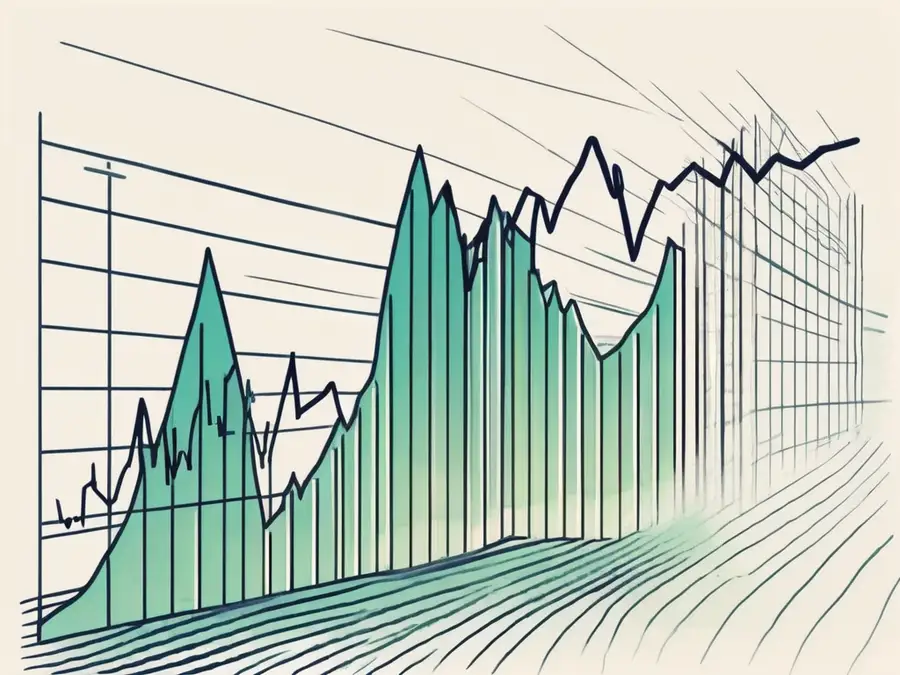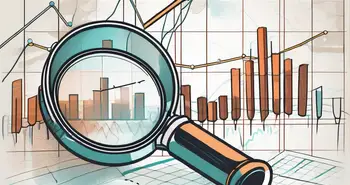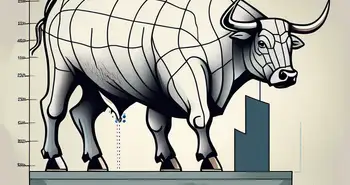The Phenomenon of the Gamma Squeeze

The Gamma Squeeze – it's a term that's been on the lips of investors and traders alike in recent months. But what exactly is it? How does it work? And, most importantly, what does it mean for the market? In this article, I will delve deep into the world of the Gamma Squeeze, unraveling its mysteries and shedding light on its implications. So, buckle up, because we're about to take a rollercoaster ride through the exciting landscape of market dynamics.
Understanding the Basics of a Gamma Squeeze
Before we dive into the nitty-gritty of a Gamma Squeeze, let's take a step back and establish a solid foundation of understanding. In its simplest form, a Gamma Squeeze occurs when the buying of options, particularly call options, leads to a surge in the price of the underlying stock.
Now, you might be wondering, what exactly are options? Well, options are financial derivatives that give investors the right, but not the obligation, to buy or sell shares of a stock at a predetermined price, known as the strike price, within a specified period of time. Call options specifically allow investors to buy shares at the strike price, while put options allow them to sell shares at the strike price.
So, how does buying call options lead to a Gamma Squeeze? Well, it all comes down to the impact that options have on the price dynamics of the underlying stock. When investors buy call options, they create a demand for the stock, which can push its price higher. And here's where things get interesting – as the stock price rises, options traders who have sold call options might need to buy shares of the stock to hedge their position, further driving up the stock price. This positive feedback loop is what fuels the Gamma Squeeze.
The Role of Options in a Gamma Squeeze
Options play a crucial role in the mechanics of a Gamma Squeeze. They act as the catalyst, igniting a chain reaction that amplifies the buying pressure on the underlying stock. As more investors rush to buy call options, the demand for the stock increases, creating a supply and demand imbalance. This, in turn, can cause a rapid surge in the stock price, catching traders off guard and leading to a scramble to cover their positions.
Key Terminology: Gamma, Delta, and Volatility
To fully grasp the inner workings of a Gamma Squeeze, it's essential to familiarize yourself with some key concepts: gamma, delta, and volatility.
Gamma measures the rate of change in an option's delta relative to changes in the underlying stock price. Delta, on the other hand, represents the sensitivity of an option's price to changes in the underlying stock price. Volatility refers to the magnitude of price fluctuations, both in the options market and the stock market.
Understanding these terms is critical because they provide insights into how changes in stock price and option buying can impact the dynamics of a Gamma Squeeze. When gamma is high, it means that the delta of options can change rapidly, amplifying the impact of stock price movements on option prices.
The Mechanics of a Gamma Squeeze
Now that we've laid the groundwork, let's take a closer look at the mechanics of a Gamma Squeeze. At its core, a Gamma Squeeze is a result of the interplay between stock prices and options. As the stock price rises and more call options are bought, the delta of those options increases. This means that for every point increase in the stock price, the option's price will increase by a larger amount.
The Interplay Between Stock Prices and Options
As the stock price continues to rise, short sellers who have sold call options find themselves in a challenging situation. They may need to buy back the call options they sold to limit their losses, contributing to the upward pressure on the stock price. This, in turn, leads to even more call options being in-the-money, resulting in a cascading effect that propels the stock price higher.
This positive feedback loop is at the heart of a Gamma Squeeze, creating a snowball effect that can catch market participants off guard and create significant price volatility. It's a fascinating phenomenon that showcases the power of market dynamics and the impact of investor behavior on stock prices.
The Snowball Effect in a Gamma Squeeze
Now, you might be wondering, how long can a Gamma Squeeze last? Well, there's no one-size-fits-all answer to that question. The duration of a Gamma Squeeze can vary depending on factors such as market sentiment, the availability of shares to borrow for short selling, and regulatory actions. Some Gamma Squeezes may fizzle out quickly, while others can persist for an extended period, captivating the attention of investors around the world.
It's important to note that while a Gamma Squeeze can result in significant price movements, it does not guarantee that the stock's price will continue to rise indefinitely. Eventually, the buying pressure may subside, and the stock price may find its equilibrium. As with any investment strategy, it's crucial to carefully analyze the risks and make informed decisions.
The Impact of a Gamma Squeeze on the Market
A Gamma Squeeze can have both short-term and long-term effects on the market. In the short term, it can create a frenzy of buying activity, driven by the fear of missing out on potential profits. This heightened activity can lead to increased trading volumes and heightened price volatility.
Short-Term and Long-Term Market Effects
In the long term, the impact of a Gamma Squeeze can extend beyond the stock at the center of the squeeze. It can trigger a ripple effect across related stocks and sectors as traders seek to capitalize on the momentum generated by the squeeze. This can result in heightened correlations among stocks and increased market-wide volatility.
Furthermore, a Gamma Squeeze can draw the attention of regulators and policymakers, prompting them to evaluate market conditions and potentially implement measures to mitigate the risks associated with these squeezes. Such actions can have far-reaching consequences, affecting market participants and shaping the future regulatory landscape.
The Role of Market Makers in a Gamma Squeeze
Market makers, who provide liquidity in the options market, play a crucial role in the mechanics of a Gamma Squeeze. As the demand for options increases, market makers may adjust their quoting behavior to manage their risk exposure. In some cases, this can lead to wider bid-ask spreads and reduced liquidity, making it more challenging for traders to execute their strategies.
Additionally, market makers may employ hedging strategies to mitigate their potential losses. This can involve dynamically adjusting their positions in the underlying stock or options to manage the arising risks. The actions of market makers during a Gamma Squeeze can have a significant impact on the overall market dynamics and participant experiences. Therefore, closely monitoring market maker behavior is of utmost importance for traders navigating a Gamma Squeeze.
Strategies for Navigating a Gamma Squeeze
Now that we've explored the inner workings and implications of a Gamma Squeeze, let's talk about strategies for navigating this unpredictable terrain. The key to successfully weathering a Gamma Squeeze lies in effective risk management.
Risk Management During a Gamma Squeeze
First and foremost, it's crucial to set clear risk parameters and stick to them. Establishing predefined exit points and stop-loss orders can help protect your capital in the event of significant price fluctuations. It's important to remember that the volatility associated with a Gamma Squeeze can result in rapid changes in profitability, so being disciplined and taking calculated risks is essential.
Additionally, diversification plays a crucial role in managing risk during a Gamma Squeeze. Allocating your capital across a range of different strategies and assets can help mitigate the impact of any one particular squeeze on your portfolio. By spreading your risk, you can better position yourself to weather the storm and potentially capture opportunities that arise from market dislocations.
Potential Opportunities in a Gamma Squeeze
While a Gamma Squeeze can pose risks, it can also create opportunities for astute investors. By carefully analyzing market conditions and conducting thorough research, it's possible to identify stocks that may be susceptible to a Gamma Squeeze. However, it's vital to approach these opportunities with caution and have a solid understanding of the risks involved.
Furthermore, staying informed and keeping a close eye on market developments is essential. Maintaining a steady pulse on the latest news, market sentiment, and regulatory actions can help you navigate a Gamma Squeeze more effectively and make informed decisions.
The Future of Gamma Squeezes
As we look to the future, it's important to acknowledge that Gamma Squeezes are a product of market dynamics and investor behavior. While it's impossible to predict when the next Gamma Squeeze will occur, understanding the factors that contribute to these squeezes can help investors be better prepared.
Predicting and Preparing for a Gamma Squeeze
One way to prepare for a potential Gamma Squeeze is to monitor options market activity. Keeping an eye on the volume and open interest of call options can provide insights into market sentiment and potential areas of interest for traders.
Additionally, staying up to date with regulatory developments and changes in market structure can help investors anticipate potential risks and adapt their strategies accordingly. By staying one step ahead, you can position yourself to take advantage of potential opportunities or protect your portfolio from potential risks associated with Gamma Squeezes.
The Role of Regulation in Preventing Gamma Squeezes
Finally, it's worth considering the role of regulation in mitigating the risks associated with Gamma Squeezes. Regulators play a crucial role in ensuring fair and orderly markets, and their actions can significantly impact the occurrence and magnitude of squeezes.
Regulators may explore measures such as increasing transparency, enhancing market surveillance capabilities, or implementing circuit breakers to halt trading during periods of extreme volatility. It's essential for regulators to strike a delicate balance, acknowledging the importance of market efficiency while also safeguarding against potential abuses and systemic risks.
FAQ
What is a Gamma Squeeze?
A Gamma Squeeze occurs when the buying of options, particularly call options, leads to a surge in the price of the underlying stock. This positive feedback loop is fueled by the interplay between stock prices and options, creating a snowball effect that can catch market participants off guard and create significant price volatility.
How does a Gamma Squeeze impact the market?
A Gamma Squeeze can have both short-term and long-term effects on the market. In the short term, it can lead to heightened trading volumes, increased price volatility, and heightened correlations among stocks. In the long term, it can trigger regulatory actions and shape the future regulatory landscape.
What are some strategies for navigating a Gamma Squeeze?
Effective risk management is crucial when navigating a Gamma Squeeze. Setting clear risk parameters, diversifying your portfolio, and staying informed about market developments can help protect your capital and potentially capitalize on opportunities.
How can I prepare for a potential Gamma Squeeze?
Monitoring options market activity and staying informed about regulatory developments and changes in market structure can help investors anticipate potential risks and adapt their strategies accordingly. By staying one step ahead, you can position yourself to take advantage of potential opportunities or protect your portfolio from potential risks associated with Gamma Squeezes.
As an expert in market dynamics and investor behavior, I have witnessed firsthand the power and unpredictability of Gamma Squeezes. These phenomena captivate the attention of traders and investors worldwide, creating opportunities and risks in equal measure. By understanding the mechanics and implications of a Gamma Squeeze, and by taking a disciplined and risk-aware approach, investors can navigate these market dynamics with confidence and potentially capitalize on the unique opportunities that arise. So, buckle up and stay informed – the world of Gamma Squeezes is an exhilarating ride you don't want to miss.
Ready to take control of your trading strategy and stay ahead of phenomena like the Gamma Squeeze? Discover Morpher, the innovative trading platform that's changing the game with blockchain technology. With Morpher, you can trade a variety of asset classes, from stocks and cryptocurrencies to forex and unique markets, all with zero fees and infinite liquidity. Embrace the power of fractional investing, short selling without interest fees, and up to 10x leverage to maximize your potential in any market condition. Plus, with the Morpher Wallet, your safety and control are paramount. Join the revolution at Morpher.com and elevate your trading experience. Sign Up now and get your free sign-up bonus to start trading the future today.

Disclaimer: All investments involve risk, and the past performance of a security, industry, sector, market, financial product, trading strategy, or individual’s trading does not guarantee future results or returns. Investors are fully responsible for any investment decisions they make. Such decisions should be based solely on an evaluation of their financial circumstances, investment objectives, risk tolerance, and liquidity needs. This post does not constitute investment advice.

Painless trading for everyone
Hundreds of markets all in one place - Apple, Bitcoin, Gold, Watches, NFTs, Sneakers and so much more.

Painless trading for everyone
Hundreds of markets all in one place - Apple, Bitcoin, Gold, Watches, NFTs, Sneakers and so much more.









